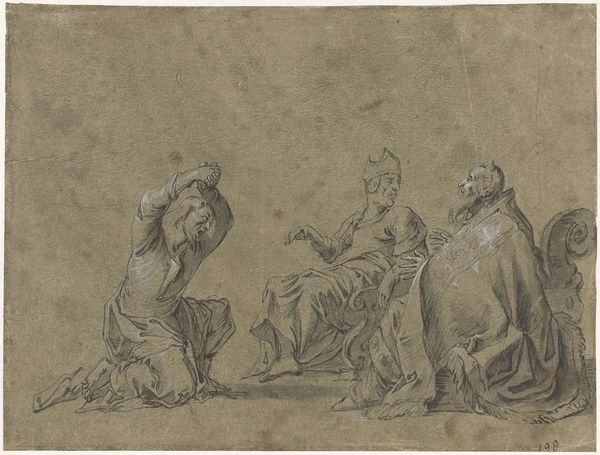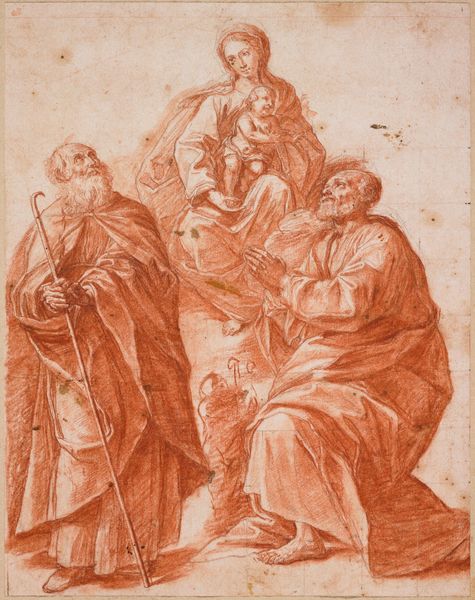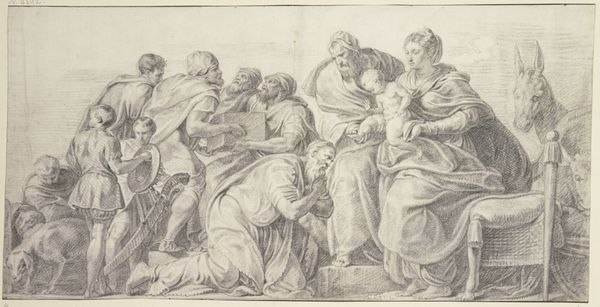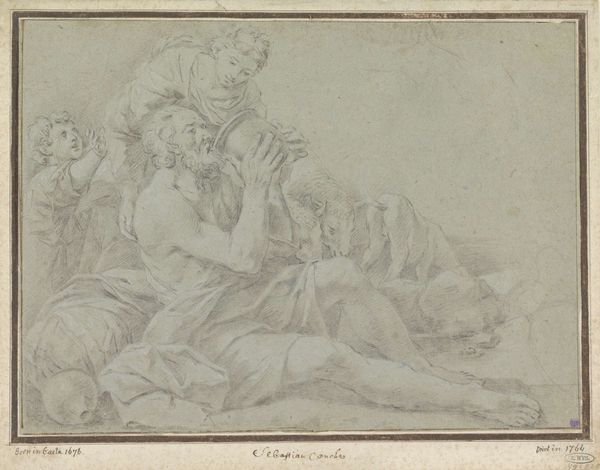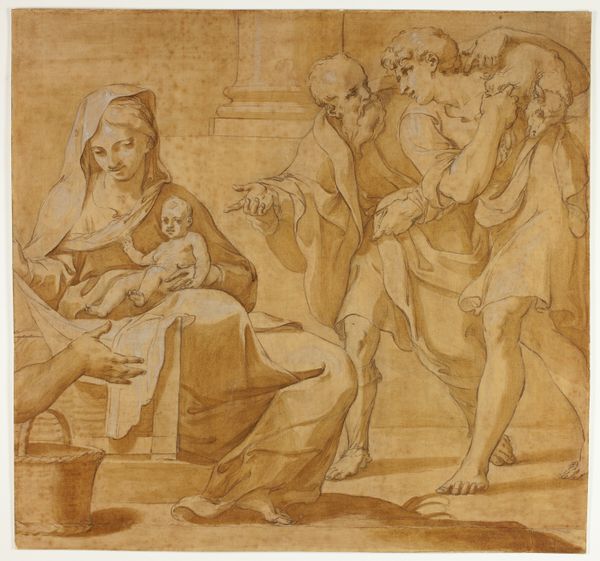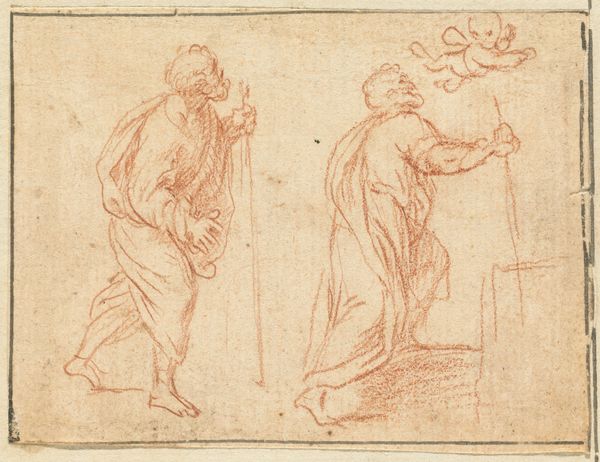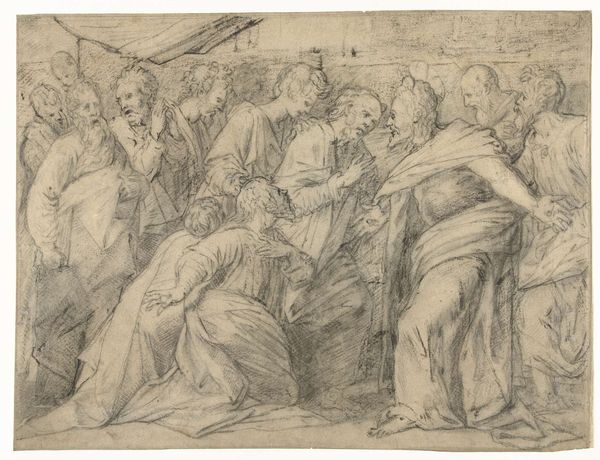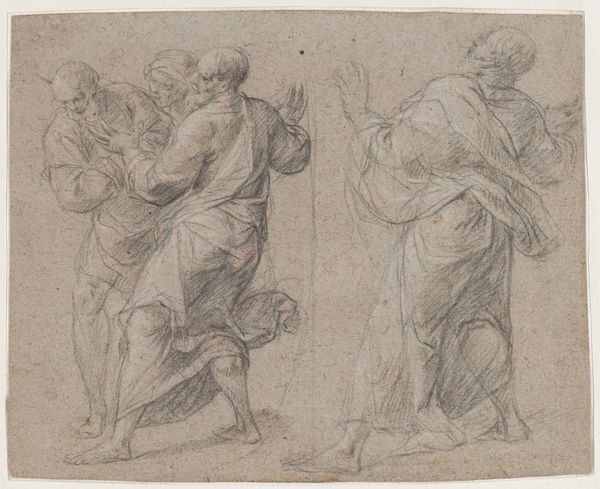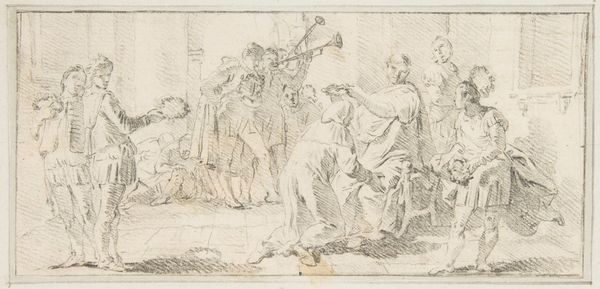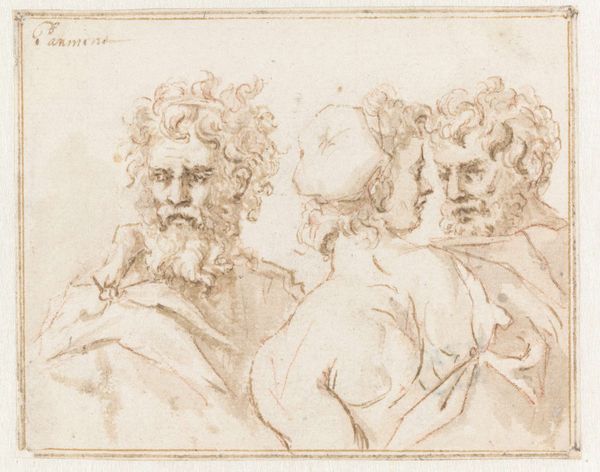
drawing, pencil, charcoal
#
portrait
#
drawing
#
baroque
#
charcoal drawing
#
pencil drawing
#
pencil
#
charcoal
Dimensions: height 214 mm, width 258 mm
Copyright: Rijks Museum: Open Domain
Editor: This drawing, "Studies van een knielende man, halffiguur, arm en buste," by G. Ladan, dates from sometime in the 1700s, created with pencil and charcoal. There’s an energy here that feels raw. What aspects of this artwork grab your attention? Curator: It’s interesting you say raw. For me, this is a prime example of baroque era’s embrace of preliminary sketches not as means to end but also for pedagogical uses: students had to practice relentlessly in the hopes of mastering drawing. Looking at the type of pencils or charcoal, its crafting process, and then how this simple material enabled Ladan or his school to study the musculature and posture of a kneeling man. Editor: So you’re saying the value is less in the final image, and more in understanding the physical creation, like a kind of labor captured in lines? Curator: Precisely. And how it relates to art production. Think about the societal structure: who had access to these materials? Who was afforded the leisure to study and practice? This drawing represents more than just an aesthetic exercise, but the socioeconomic structures underpinning art itself. It represents a learning material that not only shows you how to draw, but what it means to learn the drawing process. Editor: That makes me look at it in a different light; the artwork embodies the artistic, intellectual, and, perhaps, manual labor. Curator: Indeed. Consider the implications, how this challenges traditional boundaries, intertwining ‘high art’ with the realities of labor and production inherent in even seemingly simple drawing. Editor: Thank you, that's given me a lot to think about regarding material use and production, particularly around access and labour that’s often unseen. Curator: And I in turn am reminded of the artist's intimate engagement with his materials!
Comments
No comments
Be the first to comment and join the conversation on the ultimate creative platform.

